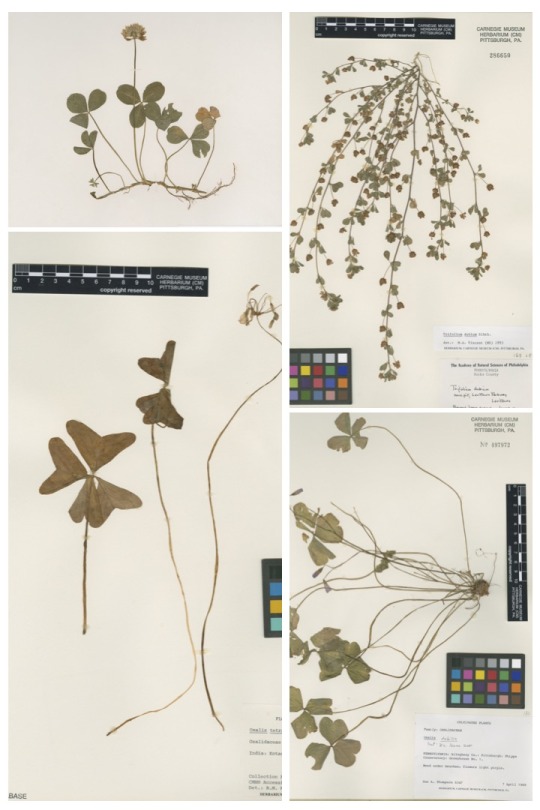There is no overwhelming scientific consensus on which species is the well-known Irish national emblem. There was survey of Irish botanists in the early 1890s asking which species was the “true” shamrock. A similar survey was repeated in 1988. The results suggest the shamrock is either Trifolium dubium(aka “lesser trefoil”) or Trifolium repens (aka “white clover”). The plants commonly sold around St. Patrick’s Day as “shamrocks” or “4-leaf clovers” are in the plant genus Oxalis(“wood sorrel”), which belong to different plant family than true clovers.

Top left: Trifolium repens (collected 1974 in Louisiana), aka “white clover”
Top right: Trifolium dubium (collected 1961 in Pennsylvania), aka “lesser trefoil”
Bottom left: Oxalis tetraphylla (collected 1981 in India), aka “lucky clover,” although not a true clover
Bottom right: Oxalis debilis (collected 1989 in cultivation), aka “pink woodsorrel”
These specimens were recently imaged (along with many others in the legume family, Fabaceae) and are publicly available online.
Check back for more! Botanists at the Carnegie Museum of Natural History share digital specimens from the herbarium on dates they were collected. They have embarked on a three-year project to digitize nearly 190,000 plant specimens collected in the region, making images and other data publicly available online. This effort is part of the Mid-Atlantic Megalopolis Project (mamdigitization.org), a network of thirteen herbaria spanning the densely populated urban corridor from Washington, D.C. to New York City to achieve a greater understanding of our urban areas, including the unique industrial and environmental history of the greater Pittsburgh region. This project is made possible by the National Science Foundation under grant no. 1801022.
Mason Heberling is Assistant Curator of Botany at the Carnegie Museum of Natural History. Museum employees are encouraged to blog about their unique experiences and knowledge gained from working at the museum.
